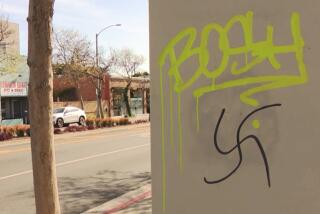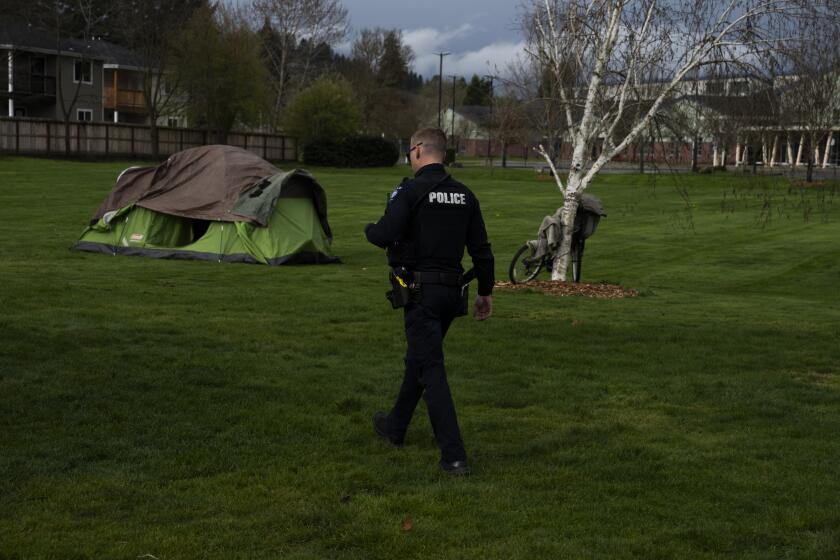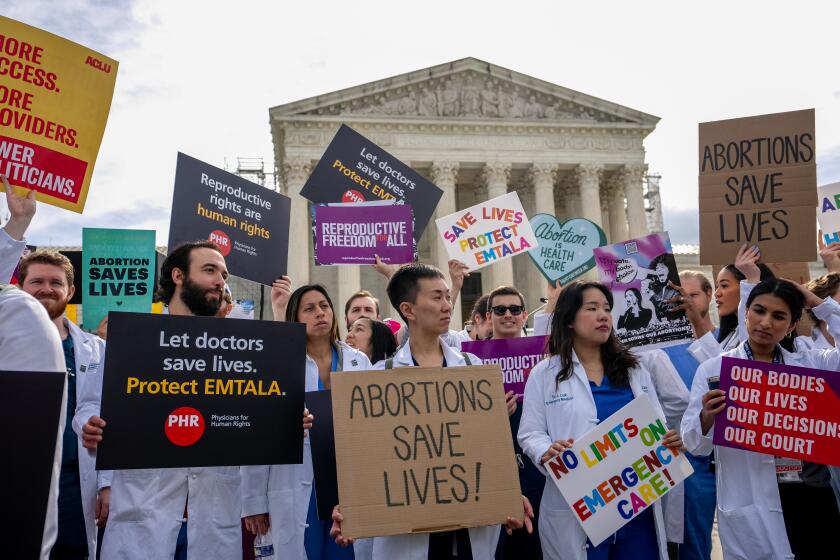Public art: Let 100 murals bloom
For decades, Los Angeles was a mecca for muralists. Lush and bold, murals sprouted like indigenous flora from Boyle Heights to the ocean to South Los Angeles. The themes were as compelling as the muralists themselves — including emerging black and Latino artists — and the neighborhoods that nurtured them. Los Angeles became identified with murals and they came to define the city — Highland Park residents immortalized on a building in that neighborhood, a line of children romping along a freeway wall.
But the city also has a less noble distinction: It is the largest billboard market in the country. In an effort to reduce billboard blight, it adopted a sign code in 1986 to curtail outdoor advertising but exempted murals. When advertisers sued, arguing that they were entitled to the same rights as muralists, the city amended its sign code in 2002 to be “equally unfair” to everyone, as city planner Tanner Blackman put it. “It was the least worst option.”
The law left many murals technically illegal, no matter how talented the artist or how willing the owner of the wall or how inoffensive the subject matter. (A mural of schoolchildren on the side of a Roman Catholic elementary school in Boyle Heights was cited as a code violation by Building and Safety authorities.) As a result, some great murals languished, ravaged by time and tagging, while others were painted over by property owners or city graffiti cleaners.
Now the Los Angeles City Council has ordered a draft of a new law to permit murals — lamentably too late for some that were lost or never started. Still, it is a welcome measure that offers at least the possibility of a renaissance in murals.
For the moment, while the ordinance is pending, city officials have wisely said they will not enforce any code citations that muralists have received or may still receive. In the last few years, there have been a number of motions by council members to address this issue, and the council has now boiled it down to this: There should be a permitting process to grandfather in existing murals as well as a process for permitting new murals on private property.
More challenging will be defining what constitutes a mural. On the surface, the difference between an ad and a work of art seems obvious. No one would consider Rip Cronk’s refashioning of Botticelli’s “The Birth of Venus” on roller skates on a Venice wall to be the same kind of “outdoor sign” as a Bijan billboard towering over a West L.A. intersection.
Certainly any new ordinance should recognize that a mural is an artistic expression and a commercial sign is designed to sell something. But city officials should avoid being too specific about the form of the artwork. Better to stay away, for example, from regulating how much space in a mural can be devoted to words. Some artists use lettering. Nor should the city mandate that murals be handpainted, as some have suggested. For example, Judy Baca, one of the city’s most esteemed muralists, is working with new digital techniques that allow her to create an image on a computer screen and print it on a giant canvas, then affix it with a plastic gel to an outdoor wall. (“It looks the same as if you painted on the wall.”) She also opposes requiring murals to have no illumination, as billboards often do.. Motion sensor lights over a mural could be a useful deterrent against tagging, she says.
City planners may seek to ban property owners from receiving any compensation when they allow a mural to go up. They also may require murals to remain up and unchanged for five years. Both provisions aim to distinguish ads from art, but the latter proposal, while well-intentioned, could be problematic if, say, the property changes hands during the five years.
Once it has issued permits for murals, the city must help them survive. We’d like to see the existing city funds for graffiti abatement used to clean up murals just as they are used to scrub tagged walls and freeway overpasses. Of course, those funds go only so far these days. At the least, the ordinance should require that city officials notify owners and artists immediately when a work is tagged, so they can repair the damage before other taggers make it worse.
The city has an obligation to protect the 1st Amendment rights of the muralists and property owners, and city officials say they will do so. “We will not veto or control content on the wall, as a city,” says Councilman Jose Huizar, whose Eastside district is home to numerous murals. But he believes there should be some community involvement. Baca says murals are public artworks that reflect their neighborhoods, and the neighbors should have input. We agree, but we want to see that input limited in scope and narrowed to the residents of the immediate neighborhood. In the end, the rights of the artist and patron must be respected.
More to Read
A cure for the common opinion
Get thought-provoking perspectives with our weekly newsletter.
You may occasionally receive promotional content from the Los Angeles Times.






